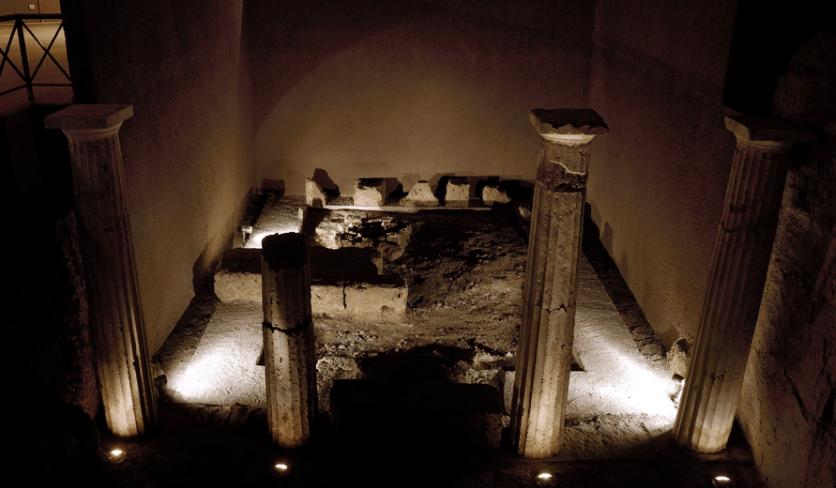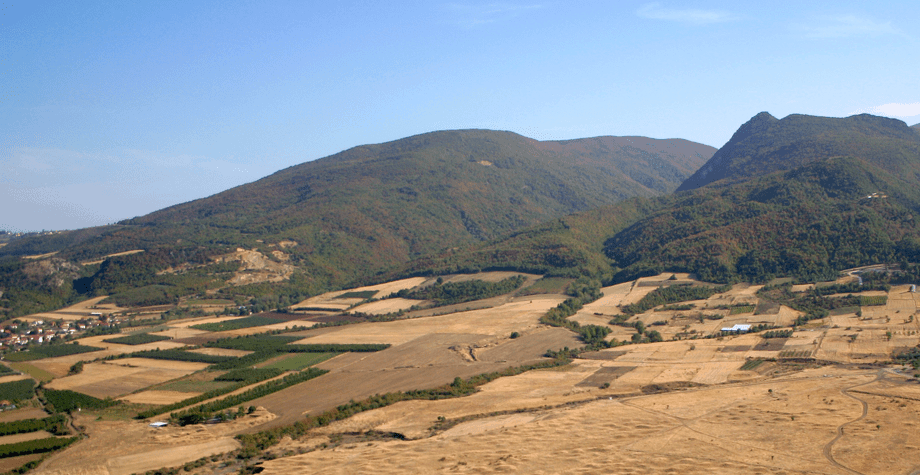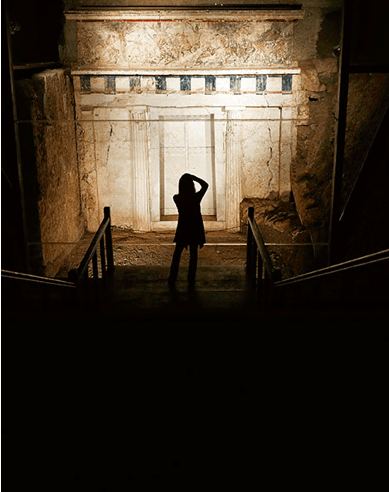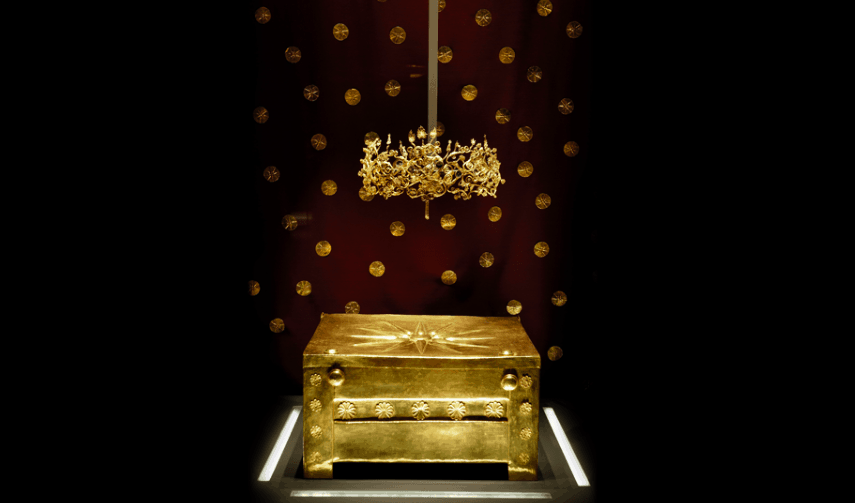
The city of Aigai, is the ancient first capital of the Kingdom of Macedonia and was discovered in the 19th century near Vergina, in northern Greece. The most important remains are the monumental palace, lavishly decorated with mosaics and painted stuccoes, and the burial ground with more than 300 tumuli, some of which date from the 11th century B.C. One of the royal tombs in the Great Tumulus is identified as that of Philip II, who conquered all the Greek cities, paving the way for his son Alexander the Great and the expansion of the Hellenistic world.

In the mid-7th century BC, Perdiccas I, a Dorian from Argos, a descendant, according to tradition, of the family of Hercules, became king of Macedonians. Aigai became the cradle of the Temenids, the dynasty that ruled Macedonia for 3.5 centuries and gave to humanity Philip II and his son Alexander the Great, who set off from Aigai and changed the history of Greece and the World.
The royal burials unearthed in the rich necropolis of Aigai attest to the city’s prosperity. During the reign of Alexander I (498-454 BC), Aigai became the centre of the most significant Greek state in the north. During Archelaus reign (413-399 BC), the court of Aigai was turned into a haven for great artists that would grace with their presence the city life. The famous painter Zeuxis decorated the king’s new palace, and Euripides wrote his last tragedies here.

Macedonia and Aigai bloomed, though, after the ascent to the throne of Philip II, who gathered around him the top intelligentsia turning his court into the matrix of cultural development, as Athens of Pericles once used to be. Philip II was the driving force behind the vast building project aiming at revamping Aigai, which resulted in a complete transformation of the city.
In the first half of the 4th century BC, all kinds of political and military developments forced the king of Macedon and his family to stay more in Pella, the port to the north of the Thermaic Gulf that rapidly grew into a city. However, Aigai continued to be the traditional centre, the land where kings chose to build their palaces and bury their dead, the place that hosted all major sacred ceremonies and city feasts of the kingdom.
In the summer of 336 BC, Philip II, the elected leader and commander of all the Greeks, decided to celebrate in Aigai his omnipotence by organising an unprecedented in glory feast. The moment he entered the theatre following the sacred procession the assassin’s dagger stuck him and killed him in front of the gathered crowd. Alexander was proclaimed king after burying his father in the royal necropolis of Aigai in an unparalleled glorious ceremony.

At the beginning of the spring of 334 BC, the young king set forth from Aigai on his great campaign that turned him into the ruler of the world. Alexander the Great presented to the Hellenistic world the new trends and currents that arose in the environment of Philip II and set the foundations of a new world.
The history of the world was changed, but the old seat of royalty was left to the margin. Following the fate of the kingdom, the city of Aigai was destroyed after the defeat by the Romans in 168 BC and then fell into decline and was gradually forgotten. Until, in 1977, Manolis Andronikos excavated the site, gave it back its name and the history of Macedonia began to be rewritten.
The archaeological site of Aigai is protected by UNESCO as a world cultural heritage monument and a site of outstanding natural beauty.
The site of Aigai consists of the Polycentric Museum, the palace, the city, the acropolis and the surrounding area.
Visiting the site’s exhibitions that are open to the public, you will find the royal burial cluster of Philip II, the Virtual Museum for Alexander the Great and the New Building of the Polycentric Museum and touring the site’s monuments (palace, royal necropolis of the Temenid dynasty) will allow you to formulate a rather dynamic view of the ancient capital of the Macedonian kingdom and, at the same time, comprehend its historical significance.
Details:
70 km from Thessaloniki, 8km southeast of Veria Aigai, Imathia
Tel. (+30) 2331.092.347
Open Mon 12:00-20:00, Tue-Sun 8:00-20:00 (winter hours Tue-Sun 9:00-17:00).
Admission for the archaeological site & museum €12 (€6 in winter) Combined admission: €14 (valid for three days and includes entry to: Museum of the Royal Tombs of Aigai, the Archaeological Museum of Veria and the Byzantine Museum of Veria).


